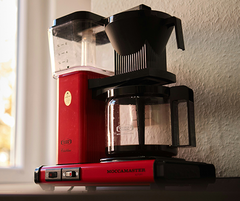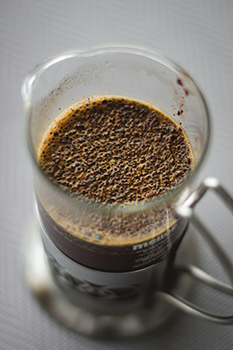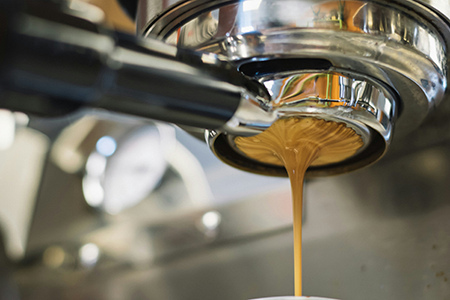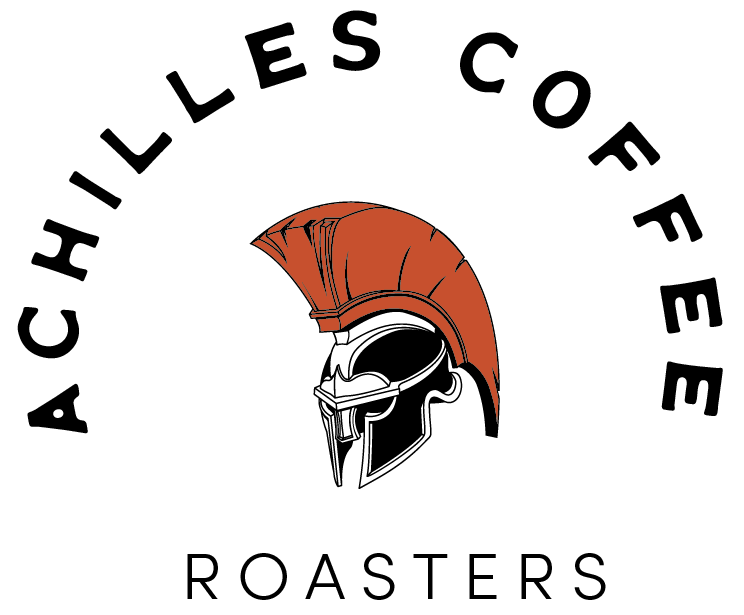Coffee Brewing Methods - The Basics
There are two ways to make coffee, brewed or espresso. It is important to note that both methods produce coffee, different methods are used to achieve the end result, which is coffee. Each has its characteristics, preparation techniques and flavors so let’s explore the differences between the different methods.
Drip Coffee
Very simply, to make drip coffee you pour hot water over ground coffee and let it steep for a few minutes. The liquid passes through a filter leaving the grounds behind. Common brewing methods include drip coffee makers, French press and pour over.
Espresso
Making espresso involves forcing an amount of hot water through finely ground coffee under high pressure. This process creates a concentrated shot of coffee.
Grind Size
The grind size for brewed coffee can range from medium to coarse depending on the brewing method being used.
For espresso a fine grind size is used to extract flavor in a short period of time.
Taste and Flavor Profile
Generally brewed coffee has a more complex flavor profile that can vary depending on factors such as the type of coffee bean used, grind size, water temperature and brewing time.
Espresso often has a narrower flavor profile, with a layer on top called crema. It tends to have a bolder taste compared to brewed coffee along with higher acidity.
When it comes to serving sizes brewed coffee is typically enjoyed in amounts ranging from 8 to 16 ounces or even more per serving. On the other hand espresso is served in shots, usually 1 ounce for a single shot and 2 ounces for a double shot.

It is interesting to note, in terms of caffeine content, a standard serving of brewed coffee generally contains more caffeine than a single shot of espresso due to its larger size. Remember, espresso is more concentrated so, if you were to consume 12oz of espresso, wow, that would contain a lot of caffeine!
Although espresso has more caffeine per ounce the overall amount of caffeine in an a shot of espresso is usually less than in a 12oz cup of brewed coffee because of its size.
When it comes to equipment, it is much easier to prepare brewed coffee, thus the average coffee lover can easily brew a cup at home. Making espresso requires an espresso machine, which is much speedier than a French press or drop coffee cone.
A coffee brewing device operates by steeping finely ground coffee in water to extract its flavors, oils and caffeine. The process may vary depending on the type of brewer such, as a drip coffee maker, French press, or pour-over but the fundamental principles involve hot water interacting with coffee grounds and then separating the brewed coffee from the grounds.
Now that we have briefly discussed the 2 most common brewing methods let’s take a deeper dive into various brew types. But if you want to level up your brewing game you can read our Coffee Brewing Tips.
Automatic Drip Coffee Maker
Almost certainly the most common way to brew coffee. Cold water is added to a reservoir and heated using a heating element. The hot water is th

en directed over a basket that contains ground coffee through a shower head that evenly disperses the water over the grounds.
The hot water flows through the ground coffee extracting flavors, oils and caffeine. This process is aided by using a filter (either paper or metal) that allows brewed coffee to pass through while retaining the grounds.The brewed coffee drips into a carafe or pot positioned below the basket for serving.
French Press (Press Pot or Plunger Pot)
To prepare coffee using this method you simply put ground coffee directly into the pot. Pour hot water over it. Give it a stir to mix everything together.
Next let the mixture rest for 4-5 minutes to allow for proper extraction. This process is called steeping.
Once steeping is complete use a plunger, with either a metal or nylon mesh filter and press it down through the coffee mixture. The filter will separate the coffee grounds which allows you to serve brew straight from the pot. This method does leave more coffee solids in the brew than a method that utilizes a paper filter. Yo will often see some coffee slurry at the bottom of your cup.
For pour over coffee start by placing a filter in a cone brewer. Set this brewer over

your desired carafe or mug. Add ground coffee into the filter.
Now pour water over the coffee grounds making sure to distribute it in a circular motion for even saturation. Coffee should extract for 3-4 minutes depending on the amount of coffee.
Check out our article with Pro Tips to create a cup of coffee as good or better than your local coffee shop.
As an additional note, for contrast an espresso machine works differently than traditional brewing methods mentioned earlier. It uses pressure to force hot water through finely ground coffee quickly—all resulting in that concentrated shot of espresso goodness.
Here is a step, by step overview of how an espresso machine works.
1. The machine heats the water to a temperature between 90°C and 96°C (194°F and 205°F). This temperature range is important to ensure extraction without scorching the coffee.
2. In preparation for espresso brewing coffee beans are ground into a consistency, finer than what is typically used for regular brewed coffee. The fine grind maximizes the surface area exposed to water, which aids in extraction.
3. The ground coffee is placed into a metal filter basket called a portafilter and then compacted using a tamper. Tamping compresses the coffee grounds uniformly

and creates a surface that promotes consistent extraction when subjected to pressure.
4. The espresso machine employs a pump mechanism that exerts pressure between 9 and 11 bars to forcefully pass heated water through the tightly packed coffee grounds in the portafilter.
5. During the extraction stage water passes through the coffee grounds to draw out compounds creating espresso. Typically this process takes around 25 to 30 seconds for a shot. The outcome is a coffee topped with a layer of crema. Crema refers to the frothy mixture of coffee oils and solids that contributes to the flavor and aroma of espresso.
Thanks to control over temperature, pressure, and extraction time espresso machines can consistently produce high quality shots of espresso that highlight the depth and richness of coffee flavors. Obviously the quality of espresso machine will affect the consistency and quality of the espresso.
All these coffee brewing methods share an approach, using water to extract oils, aromatics, and caffeine, from coffee grounds. Each method has an impact, on the taste, strength, and overall quality of the coffee. This diversity allows for an array of preferences and flavors to suit tastes.








